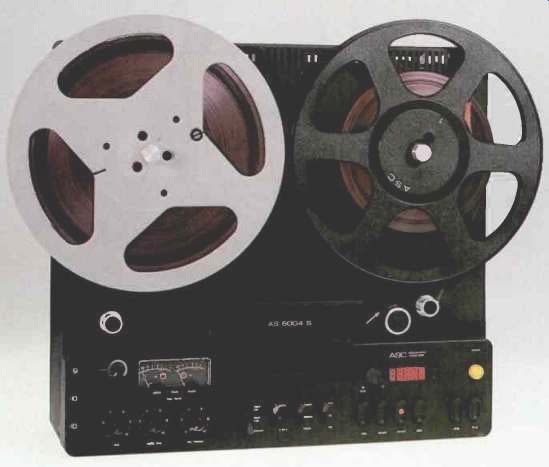
Manufacturer's Specifications:
Frequency Response: 20 Hz to 22 kHz at 3 3/4 ips, to 25 kHz at 7 1/2 ips, and to 28 kHz at 15 ips.
Signal/Noise Ratio: 64 dB. 10-kHz
Dynamic Range: 53, 63 and 70 dB at 3 3/4, 7 1/2 and 15 ips, respectively.
Input Sensitivity: Mike, 0.2 mV; line, 22 mV; DIN, 0.04 mV; mixer, 100 mV.
Output Level: Line, 1V; DIN, 650 mV; headphone, 1.6 V; mixer, 100 mV.
Flutter: ±0.1%, ±0.05% and ± 0.04% weighted peak at 3 3/4, 7 1/2 and 15 ips, respectively.
Wind Time: 160 seconds for 3,600 foot tape.
Dimensions: 16.9 in. (430 mm) W x 15.6 in. (395 mm) H x 6.1 in. (155 mm) D.
Weight: 44.1 lbs. (20 kg). Price: $1,795.00.
Company Address: Hammond Industries, 8000 Madison Pike, Madison, Ala. 35758.
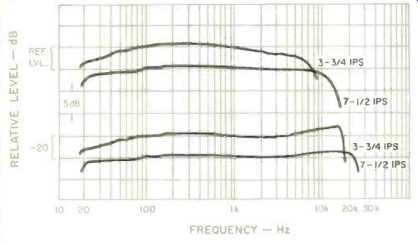
Fig. 1--Frequency responses at reference level (400 nWb/m at 400 Hz) and
at-20 dB, at both 3 3/4 and 7 1/2 ips, using Maxell XL tape.
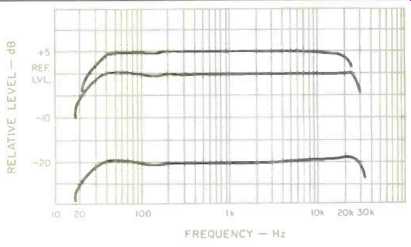
Fig. 2--Frequency responses at 15 ips, measured at reference level, at
+5 and 20 dB, using Maxell XL I tape.
The ASC Model AS-6004/S is a well-performing tape recorder recently introduced in the United States by Hammond Industries. The manufacturer is the German firm of Audio System Componenten; they use the initials "ASC" for their products, and so shall the text that follows. After a period of testing only cassette decks, I was glad to dig into the versatile AS-6004/S. This deck provides three speeds: 3 3/4, 7 1/2, and 15 inches per second. Many recorders offer 3 3/4 and 7 1/2 or 7 1/2 and 15 ips, sometimes charging more for the higher speed unit. The ASC unit has the expected three heads, with space to mount a fourth. The deck received for evaluation was a four-track, two-channel unit, and a halftrack stereo head could have been mounted in the fourth position, enabling playback of that format. (There is a halftrack-recording version which can accept an auxiliary quarter-track playback head.) The headblock assemblies are of plug-in design, which makes fast format changes easy.
The transport system includes a d.c. capstan motor and two outside-rotor reel motors. The tape speed can be changed at any time, even while in play or record mode.
There is tape-end sensing for automatic drive-shutoff, both from an optical sensor at the supply end of the headblock (useful with transparent leader) and from a position switch on the take-up tension arm. Just to the left of the arm roller is the rubber-tired drive idler for the five-digit, red-LED counter which reads in meters and decimeters. The first digit reads to "1" only, but that is sufficient even for the longest tapes on 10 1/2-inch reels. A tilt-down section just below the straight-line tape path provides access for cleaning and demagnetization. A "Cue" knob to the left of the counter locks into a soft detent when its lever is pushed to the left.
The reels can then be moved manually, while the tape remains in contact with the playback head. If the deck is put in a wind mode, "Cue" will automatically reduce the level and roll off the highs, and winding will continue only while the button is held in. If "Play" or "Record" is resumed, "Cue" immediately snaps back to its off position. In addition to the normal transport-control buttons, there is a "Repetition" key which gives rewind when held in, and then switches to play mode when released. In general, the logic allows making changes from any mode to any other, but fast-wind modes are locked out when recording in order to prevent inadvertent mistakes.
Two sets of dual-concentric level pots for both microphone and line inputs provide complete mixing of these sources, and there is a master level pot as well. The peak responding level meters and the headphone level pot are above, and the headphone and microphone jacks are to the left. A red record-mode indicator is just below the scale of each meter. The headphone level pot does not affect the line output, and the "Tape [line] Output" pot (on the top panel, near the output jacks) does not affect the headphone level. This is a desirable configuration, but it is all too rarely found.
Four lever-action switches select monitor mode (source or tape with either DIN or NAB equalization), effects mode (echo/off/sound-on-sound), record track (upper/stereo/lower) and tape speed (9.5,19,38 cm/S or 3 ¾, 7 ½,15 ips). Power is controlled by a large, yellow pushbutton. The white designations on the black panel were easy to read, whatever the lighting.
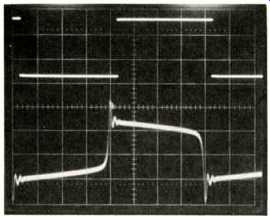
Fig. 3--Record/playback of 634-Hz square-wave signal at 15 ips. Horizontal
scale: 0.2 mS/div.
While headphone and microphone jacks are on the front of the deck, all other connections are made to a jack strip recessed into its top panel. (When the deck is operated horizontally, this becomes the rear panel, which is also convenient.) There are phono-jack pairs for line in and tape (line) out, a level control for the output jack, a DIN "Radio" jack, and four other, more unusual connectors. The multi-pin "Remote Control" jack can accept wired or infrared remote controllers, a variable speed control, or both the vari-speed and a remote, with an optional "Y" connector. Also on the panel are two jacks, labeled "Projector" and "Dia," which the manual does not explain. The manufacturer reports that the first is for "double-system" Super-8 film sound (in which the sound is on a separate tape rather than on the film), while the second is for synchronizing slide-show soundtracks. These are apparently for European projectors, and the "Dia" feature, at least, requires an "impulse head modification" at extra cost.
The last jack is labeled "Mixer," and has a dummy plug in it. The dummy plug contains jumpers to feed through the signals of the two channels. This break-in point is after the master gain control and before the meters and the record amplifier. With the plug removed, it is possible to insert external signal processing such as noise reduction or to mix in additional sources, if desired. This is an unusual feature, and it could facilitate some tasks that are done less satisfactorily with other decks. There is also a screw-type fuse holder on this panel.
For ventilation, the back panel is perforated over its entire surface, while the front panel has slots near its upper edge.
This allows convection cooling with the deck positioned vertically or horizontally. Removing the back panel allows interior inspection. The soldering was excellent, in general, with just a few spots of flux where there had been hand soldering. The high-quality parts on the p.c. boards were identified, and the layout and workmanship were good. A large transformer was at the top, a good placement which restricts its heat and field to less-critical areas. The good-sized, outside-rotor reel motors were noted, but it was not possible to get a good look at the capstan system with the limited disassembly performed. A carrying handle was provided-more open-reel decks should have carrying handles, particularly those that might need to be moved for remote recording.
Measurements
The playback responses were checked with Ampex and MRL test tapes. With very few exceptions, all of the points were within ± 1.8 dB, including some fringing corrections needed at the lower frequencies because of using full-track tapes. The measured frequencies of the played-back tones indicated that the three play speeds were 0.1% to 0.3% slow, which is plenty close. A 200 nWb/m flux level at 500 Hz gave a meter indication of about "-9." Record/playback tests at 500 Hz showed that the reference level of 400 nWb/m was obtained with a meter reading of "-2.5." Meter zero was very close to 500 nWb/m, which is a very high flux level; consider the fact that some recorders have meter zero at 185 nWb/m, almost 9 dB lower in flux level. Many of these recorders have average-responding meters, while the AS6004/S's are peak responding, so the difference is actually quite logical.
The record/playback responses were checked at 20 dB below 400 nWb/m, and the responses at 7V2 and 15 ips were excellent for all the tapes tried: BASF LH, Maxell UD and XL I, and TDK LX and GX. At 33/4 ips, the BASF LH response was the flattest, but the distortion was higher.
Maxell XL I was selected as the best tape for this unit, considering all factors.
Swept-frequency responses were made at reference level and 20 dB below that for all three speeds, and also at +5 dB at 15 ips. The plots are presented in Figs. 1 and 2, and the 3-dB-down points are listed in Table I. The results are very good, and the highest speed provides obvious benefits in flatness, higher recording levels, and extended high-end responses. In general, the results meet the specifications, although they appear to be shy at the low end at 15 ips and at the high end at 33/4 ips. The tests were, however, run at levels 4 dB higher than specification, so the discrepancies (which are judged to be minor) would be even less at the specified 20 dB below 250 nWb/m.
Table II lists various measured record/playback characteristics. All of them are very good, although careful head adjustment would reduce the A/B phase error. (My playback test tapes indicated just enough head misalignment to account for this.) Note that the jitter and phase error are more or less inversely proportional to tape speed.
In recording, fairly little bias appeared in the output from the tape monitor jack. Figure 3 shows the input and record/ playback waveforms of a 634-Hz square wave at 15 ips.
(This was actually quite good at all three speeds.) Note the short oscillation at the leading edges of the waves; this oscillation occurs on many decks at the resonant frequency of the record EO circuit.
With a reference level of 400 nWb/m (meter "-2.5"), distortion levels were measured, for all three tape speeds, from -10 dB to the points where HDL3 = 3% for a 400-Hz test signal. The distortion limits, listed with the other data in Table III, are very close for the three speeds, but 15 ips does evidence the lowest distortion at zero and below.
There was consistent HDL2 of 0.08%, which other checks showed to be in the electronics. This was the limiting distortion below -4 dB, although 0.08% would be low enough for most everyone. There also was some HDL5 which was always 7 dB below HDL3 at 15 ips and about 15 dB below at the other speeds. Essentially, its level was not significant until zero was reached. Table IV lists the signal-to-noise ratios with both IEC A and CCIR/ARM weightings, with figures for both reference level and the 3% distortion limit.
All of the figures are excellent, and these are obtained without any noise reduction.
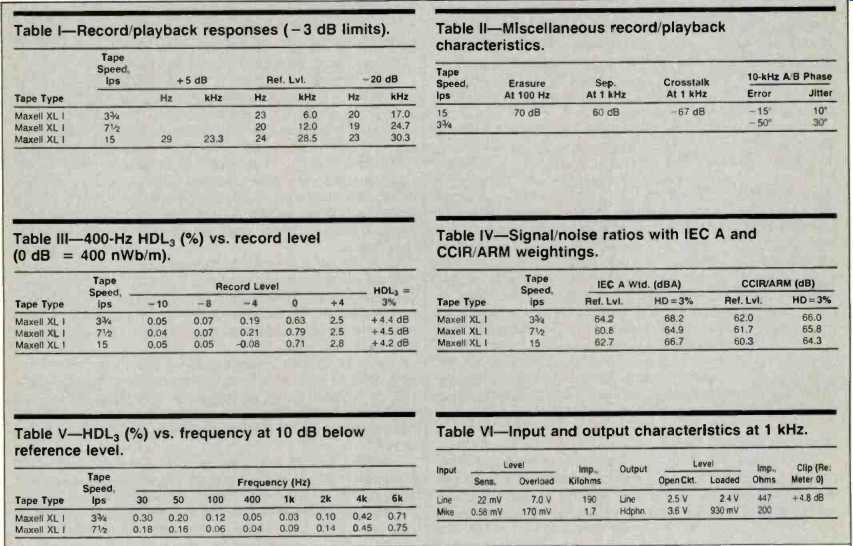
Table I--Record/playback responses (-3 dB limits).
Table II--Miscellaneous record/playback characteristics.
Table III--400-Hz HDL3 (%) vs. record level (0 dB = 400 nWb/m).
Table IV--Signal/noise ratios with IEC A and CCIRJARM weightings.
Table V--HDL3 (%) vs. frequency at 10 dB below reference level.
Table VI--Input and output characteristics at 1 kHz.
The level of HDL3 was measured at 10 dB below reference level from 30 Hz to 6 kHz at 3 ¾ and 7 1/2 ips. In general, the results at 7 ½ ips are better at the low end, and 3 ¾ ips is a bit better at the high end, which seems a little surprising. Because of high-frequency bandwidth limitations at lower speeds, the signal/noise ratios did not indicate an advantage for the higher ones, nor do those tests show up the headroom limitations of the lower speed. The manufacturer's specifications include figures for the 10-kHz dynamic ranges at each speed, and they state that at 7 ½ it is 10 dB better than at 3 3/4, and that at 15 ips it is 7 dB better than at 7 1/2 . My 0-dB swept responses for the two lower speeds, and my +5 dB response at 15 ips at 10 kHz, show the same relative differences between speeds as the manufacturer's specifications do. As we shall see, the meters are designed to make the user aware of these changes in saturation level with change of speed.
Table VI presents a number of input and output characteristics measured at 1 kHz. The reference meter reading was zero, and it should be noted that the manufacturer's specifications are referenced to a level of 250 nWb/m, which is 6 dB (half the voltage) below zero. With this in mind, I point out that the line input was more sensitive and the microphone input less sensitive than specified. The mixer in/out level measured 200 mV, which would be a good match for most external devices. The headphone output impedance of 200 ohms seemed a bit high, but its output was 930 mV with the test-standard 50-ohm load. The maximum level was excruciatingly high for all of the headphones tried, but it could be lowered to any desired volume with the pot. Output clipping occurred right about the meter maximum of "+ 4" at +4.8 dB re: meter zero. This is not the limitation it appears at first because (1) the 3% distortion limit is just below this, and (2) peak-responding meters need little clipping headroom.
The dual-concentric microphone and line input pots actually tracked fairly well when the knobs were held together (there is no friction coupling). The master level pot tracked within 1 dB, from maximum down close to -80 dB; this is superb and much the best I've ever measured. While setting levels for distortion checks, it was found best to make certain that the master pot was always set higher than the channel pot sections, to minimize the possibility of internal overload. The tape/line output pot on the top (or back) panel tracked within 1 dB from maximum down to about-35 dB, fairly good. The headphone pot sections tracked within 1 dB for about 40 dB, quite acceptable for the purpose. The output polarity was reversed from the input, both in source and tape monitor. Playback polarity was also reversed, according to the Lipshitz polarity test tape.
The response times of the meters were exactly in agreement with IEC Standard 268-10 on peak program meters, better than any others tested to date. A meter indication of "-20" was reached at -15.4 dB, but all other points were much closer-most of them within 0.2 dB. The frequency response of the meters reflects the fact that they are fed the record-equalized signal, leading to a slight rise at the low end and a high-end boost dependent upon tape speed. At 15 fps, the boost was 1.5 dB at 10 kHz and 4.6 dB at 20 kHz.
At 7 ½ fps, the boosts were 7.5 dB at 10 kHz and 24.4 dB at 20 kHz, and at 3 ¾ fps the boosts were 11.4 at 10 kHz and about 36 dB at 20 kHz. This metering approach ensures that the recordist is shown how levels must be set to minimize distortion and saturation losses whatever the tape speed and whatever the music content.
The flutter was very low at all three tape speeds, and for all positions on a reel. Weighted-peak figures were ±0.035%, ±0.028% and ±0.019% for 3 ¾, 7 1/2 , and 15 fps respectively. There were no changes in tape speed with changes in line voltage from 110 to 130 V. Over a period of time there was a total spread in play speed of about ± 0.02%. A few fast-wind tests showed that the tape speed was close to constant for most of the reel, indicative of constant tension. The winding time for a 10 1/2 -inch reel with 3,600 feet of tape was 110 seconds, considerably shorter than the specified 160 seconds. Changing directions of wind took less than a second, while going from winding to play required about 2 seconds. At 15 ips with the deck horizontal, there was a take-up oscillation when 7-inch reels were used. This did not occur with the deck vertical, nor did it occur at other speeds under any conditions. A slight touch of the hand corrected the problem, but I suspect that a slight adjustment would have eliminated it.
Use and Listening Tests
The bilingual owner's manual has most of the basic information, but there is much needed detail that is missing. The ASC deck has a number of features and its own particular characteristics that the manual should fully discuss--using the "Mixer" connection, meter/flux levels, setting levels, etc.
A service manual is provided, with helpful schematics and layouts, but its English text is clumsy in spots. Hammond Industries stated that there will be improvements made in these manuals. A rear-panel illustration is also needed, to ensure that the user understands the functions of all the jacks and what accessories mate to them.
Tape threading across the headblock assembly is straight-line, although a little care was needed to avoid letting any slack get caught. Looping the tape over the tension arm and counter rollers was quite easy, better than on many open-reel decks. Tilting the headblock dust cover down gave fairly good access to the heads for editing, and good access for head cleaning and other maintenance tasks. Equalization and bias adjustments were inside the deck, hence not readily accessible for touch-up adjustments before important recording sessions or for changing tape types.
All of the controls and switches were completely reliable, with no failure of any kind. The only difficulty was the slow, oscillating take-up with 7-inch reels at 15 fps when the deck was horizontal. The counter evidenced no slippage, and it was possible to return to exact points after fast winding the tape back and forth.
"Record" caused a slight clunk in tape noise, but there was no stop sound detected. The metering was excellent with all types of music and under a wide range of lighting conditions. Switching to a lower speed resulted in an immediate indication that a lower level was needed to prevent distortion.
Listening to the playback proved the excellence and importance of the AS-6004/S metering scheme. It was most enjoyable to listen to the smooth, open sound with 15 ips, but the lower speeds had much to commend them as well.
This ASC deck is a very versatile and well-performing recorder, and its price is quite reasonable for all that is included.
-Howard A. Roberson
(Source: Audio magazine)
Also see: AKAI GX-F66RC Cassette Deck (Nov. 1982)
= = = =